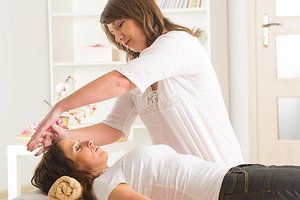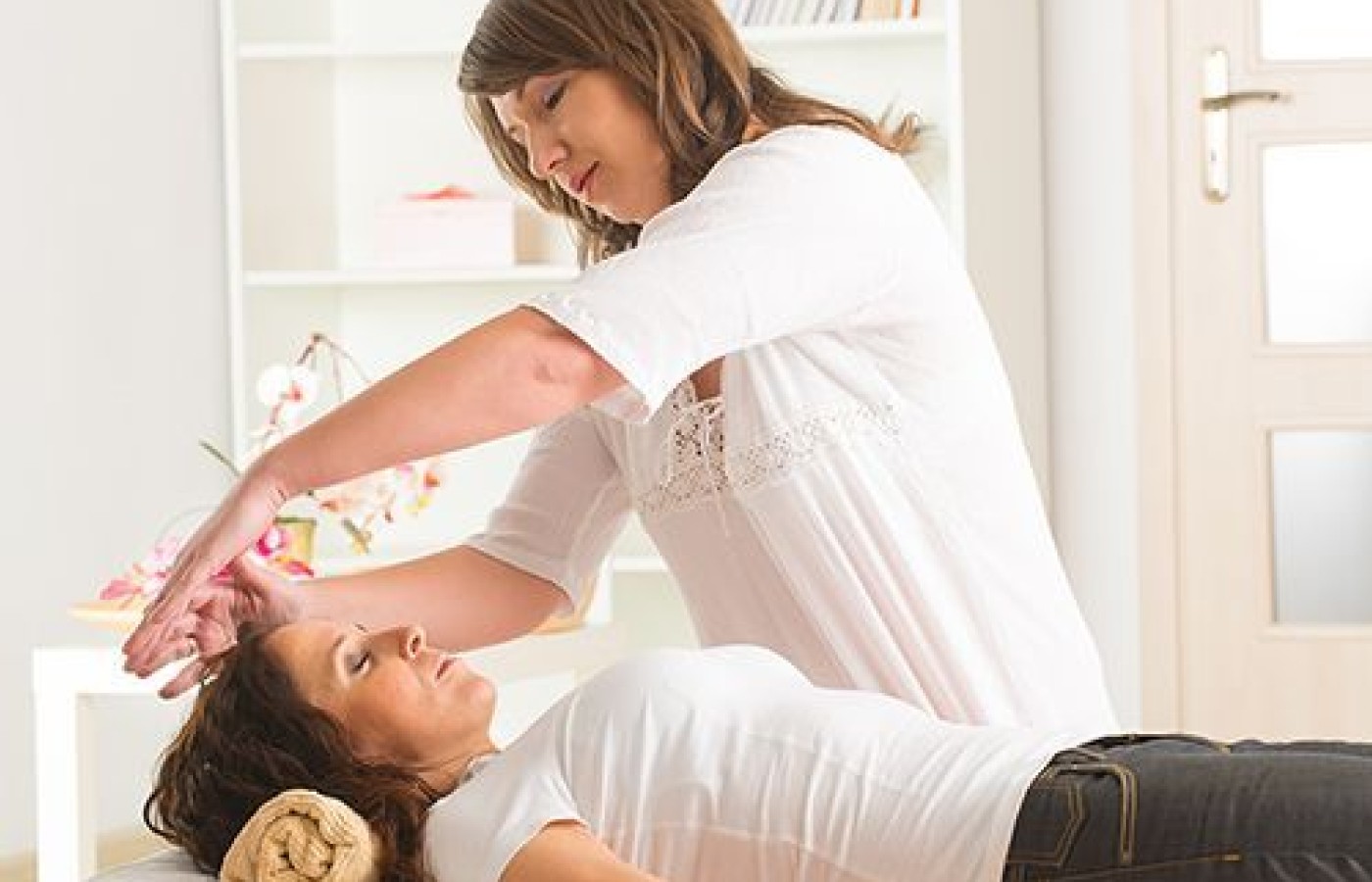Whether you accept it, avoid it or live somewhere in between, insurance coverage has become a defining issue for our profession. Patients increasingly expect to use their benefits, practitioners want to be compensated fairly for their time and expertise, and the system itself remains – at best – fragmented. The encouraging news is that coverage has expanded in meaningful ways. The challenging news is that reimbursement, across the board, remains inadequate.
It's All About That Ki
As an industry are we shifting too much toward a Western mind set? We strive to understand how acupuncture works using imaging and extensive studies. We spend numerous hours of our training learning Western medicine and learning to speak their language. What happened to our core though? What happened to the Qi?
The Energy of Acupuncture
I recently had a conversation with a colleague about the importance of understanding the energy aspect of acupuncture. The one thing that makes us unique is that we learn how to subtly manipulate energy to put the body into a place where it can heal itself. This is what separates us from a Western medical practitioner that simply inserts a needle.
That knowledge of how energy flows through the body allows us to practice so much more than "cookbook" acupuncture. Cookbook acupuncture has its place and can be very effective in certain situations. However, it in no way compares to a treatment by someone that is a master of their own energy. My colleague compared it to speaking a secondary language. You must know how to speak the language that surrounds you, but it doesn't negate the importance of your native tongue.
Think back to your first day in acupuncture school. You are learning about this foreign concept of Qi. What is it? How can this esoteric concept be defined, and more importantly how does it pertain to traditional Chinese medicine? Even today, after you have experienced what Qi is you may not be able to adequately define what it is.

At some point in your program you may have taken Qi Gong or Tai Qi, but how many of you still practice them? Our days get busy, we forget, or maybe the self-practice we learned in school just doesn't resonate with you. This was certainly the case for me, and it's what ultimately led me to Japanese Reiki. It was the study and practice of Reiki that helped me advance my understanding of energy within myself, and that helped me to understand the energy of others.
Regardless of if you refer to it as Qi, Chi, Ki, or Universal Energy it refers to the same life source energy we utilize in acupuncture. Have you ever considered how Ki can help both you and your practice grow? Cultivating and strengthening your own Qi is what can differentiate a healthy practitioner and a burned-out practitioner. It is important to already be consistently doing a daily practice before you get burned out. Once you hit bottom it is a lot more difficult to recuperate if you have to start learning the tools from the beginning. Ultimately, the goal is to live Reiki. To live in a space where through your own work your own inner bright light shines through, and the "storm" that happens around you has no effect.
The History of TCM & Energy
In the beginning Chinese medicine started by observing nature. This is the reason we use the elements (five phases) in TCM. On a base level all things resort back to nature, and those elements reside within us. As all things resort back to nature, so do all things resort back to energy. From this viewpoint nature and energy reside within us.
"When we really experience the energy that flows through everything, life makes sense and contentment appears," from The Light That Shines Through Infinity, by Dainin Katagiri.
What is Reiki?
Reiki is considered to be an energy medicine that utilizes self-development and self-healing, that can then be utilized in the healing of others. There are many different styles of Reiki. For ease, we will only discuss the Western style and the Japanese style. Reiki is around 100 years old and has its basis in Buddhism. Rei can be translated as Spiritual and Ki means energy. In the early 1900s there were many different types of energy medicine being practiced and taught in Japan. However, it was Mikao Usui that taught more the spirituality aspect of it. All of his teachings are guideposts to help you on your journey to rediscovering true self.
It is through utilizing daily meditations, chanting, and utilizing the precepts that will help you on that journey. Rediscovery of true-self allows for healing to happen. Once that has happened you are able to become the "space" with which to help others find the path to healing their selves. There is no giving, no judging, no receiving, just being whatever space is necessary. More importantly, the tools that you learn through out Reiki Level 1,2, 3, and teacher can help you in everyday life. They can help guide you through difficult situations, aid in business and negotiations, and so much more.
Most practitioners in the U.S. practice a lineage that was brought to Hawaii by Mrs. Hawayo Takata. There is a lot of debate as to who and when Reiki turned into what we see now. In some styles it is taught that you require crystals, grids, and other tools. Please know that is exactly what they are; tools or training wheels. You are universal energy, it already resides within you. It's just covered up by limiting points of views from self and others. Once you start to remove those points of views you are left with the beautiful bright light that is you. It's being that higher vibration and working on yourself that allows for someone else's energy to choose to rise-up to meet yours. When the energy flows freely through you so too does that of your patients.
Opening the CHannels
Originally, before the use of needles practitioners used Qi, massage, and anything sharp to open the channels. We have come a long way since then. We have scientific studies that have shown how acupuncture points respond to stimulation with a needle. We learn Qi Gong in school is because when you place a needle in someone the energy flows through you and then through the needle. You are not just simply sticking a needle in someone. Your energy, as the practitioner, must be flowing freely. We know what just inserting a needle can do, now imagine the effects that can happen when you are being Reiki.
Rediscovering True-Self
It is easy to cover up our true-self with anger, worry, fear, and judgment. By practicing the system of Reiki you start to peal back those layers of emotions, allowing for your own inner bright light to shine through. Which in turn shows our natural state of mind.
Japanese Reiki utilizes the Reiki Precepts, chanting the mantras, meditating on the symbols, breathing practices, hands on/off healing, and performing/being a part of reiju (attunements). The Precepts (below) are the foundation of Reiki and are guidelines for how to "be Reiki" in everyday life. By meditating on these, and living them as life principles, your entire being starts to shift.
Reiki Precepts
- Do not bear anger
- Do not worry
- Be humble
- Be true to yourself and your way of being
- Show compassion to yourself and others
The benefits of Reiki are vast. Both client and practitioner benefit from each session. Here are some of the benefits:
- Aids in sleep
- Lowers cortisol levels
- Aids in digestion
- Decreases pain
- Decreases stress/anxiety/depression/anger
- Decreases obsessive thoughts
- Decreases dosage of anesthesia
- Decreases healing time after surgery
- Lowers blood pressure
Reiki Research
A research article written for the Biological Research for Nursing, showed that Reiki has an effect on the parasympathetic nervous system when applied to health care professionals with burn out syndrome.1 It also showed that Reiki can influence heart rate variability and body temperature. Prior studies, that they acknowledged, show an effect on the autonomic nervous system because the ANS has a physiological response to stress.
For millennia people have practiced diaphragmatic breathing. It is the cornerstone to the meditations taught in Shoden Japanese Reiki level 1. Research has shown that deep diaphragmatic breathing can reduced the "fight-or-flight" response of the sympathetic nervous system and enhance vagal nerve activity. A study published in the Journal of Alternative & Complementary, shows that slow abdominal breathing can significantly decreased the systolic blood pressure.2 Slow abdominal breathing combined with EMG biofeedback could reduce sympathetic activity and could stimulate vagal nerve activity.
Even the Department of Defense recognizes the benefits of Reiki as an adjunct therapy for PTSD.3
How Does This Apply to Acupuncture?
Many turn to the acupuncture field because of their desire to help people. Once they start their practice, if not sooner, they might start to notice that they feel like they are taking on other people's energy or symptoms. They may also feel fatigued, stressed, or have cyclical thinking about clients. Reiki can help you to stay grounded and increase your awareness.
Aside from all the personal benefits to studying Reiki it can have profound effects on your patients. Have you ever considered combining acupuncture and Reiki? Acupuncture in and of itself has been shown to lower cortisol levels. When you start to combine the two it allows for deeper and faster relaxation. This then allows your carefully chosen acupuncture points to work their magic faster. The faster your patient calms their mind the faster the healing begins. As the practitioner you benefit too.
Why Should You Add Reiki to Your Practice?
How frequently have you had a stressed patient on your table, and no matter what you do you are not seeing any changes? As a practitioner, when you step into a Reiki session it is as if you are stepping into a meditation. You continue to work the tools you practice every day. You calm your own energy, and in turn their energy will start to calm. It's a dance. A balancing. You neither judge, give, or remove. Through either hands on or hands off both energies start to shift.
Since you are not judging, you are not claiming any sensations as yours. You are not taking any of their "stuff" on. You simply acknowledge its presence and let it go knowing that healing will take place when ready. As the session ends you step away full of gratitude to have been part of their journey. You find yourself calmer and more full of energy then when you walked in. Your patient is calm and full of gratitude for the opportunity to be in a safe place to heal and "just be." For the hour that you worked with that person you allowed them to truly relinquish control and let go, and you had the opportunity to calm your own monkey mind and release your own judgments. How does it get better than that?
References
- Diaz-Rodriguez L., Arroyo-Morales M, et al. Immediate Effects of Reiki on Heart Rate Variability, Cortisol Levels, and Body Temperature in Health Care Professionals With Burnout. Biological Research For Nursing, 2011;13(4), 376-382.
- Wang SZ, Li S, et al. Effect of Slow Abdominal Breathing Combined with Biofeedback on Blood Pressure and Heart Rate Variability in Prehypertension. Journal of Alternative and Complementary Medicine, 2010;16(10),1039-1045.
- Miles D. Intrepid Center Marks First Anniversary. U.S. Department of Defense, 24 June 2011.



